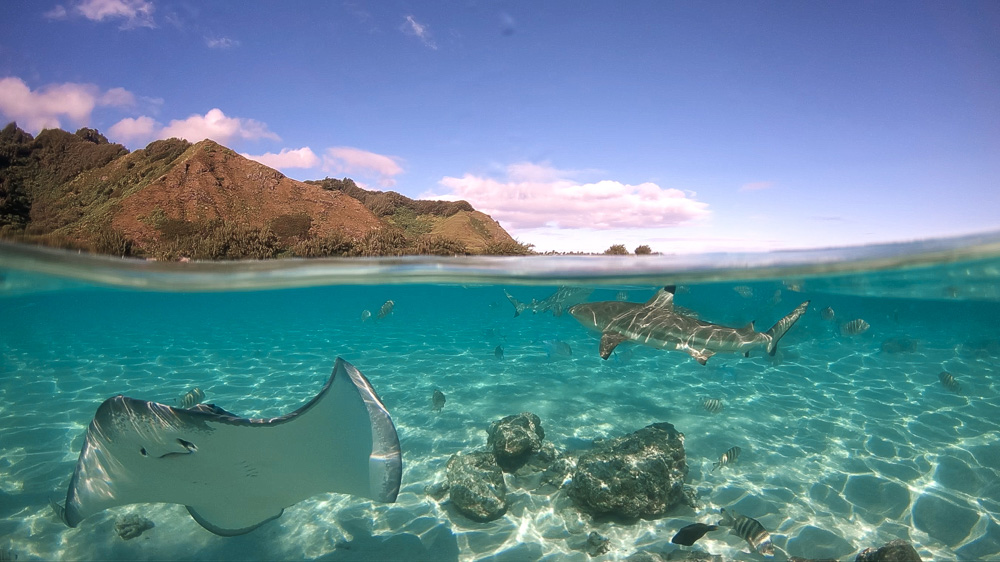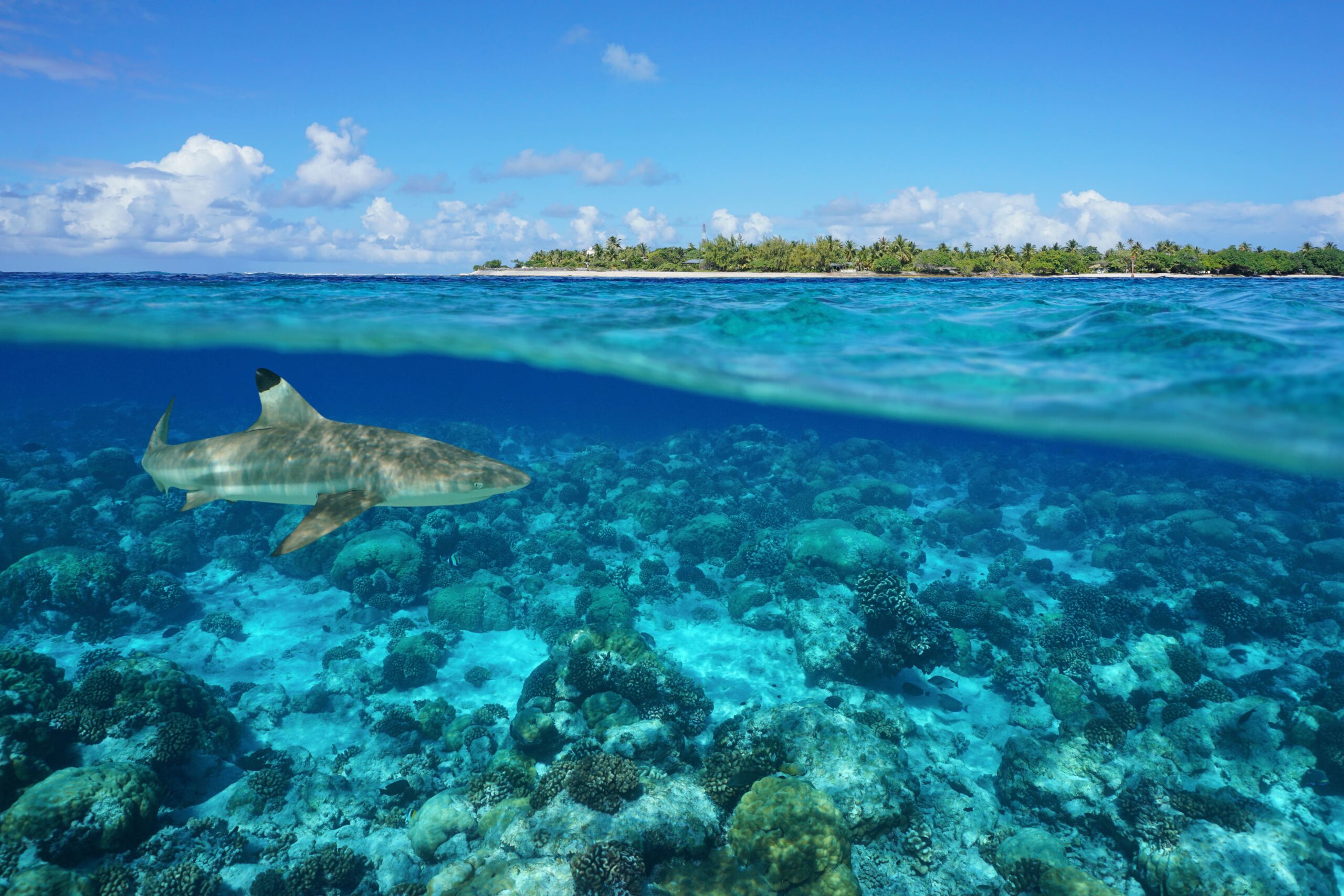The 2nd largest atoll in the Tuamotu Archipelago, Fakarava is an immense barrier reef of coral, forming a ring 37 miles long by 15 miles wide which contains a spectacular lagoon. Due to the rich diversity of the ecosystem, Fakarava and 6 neighboring islands in the archipelago, make up a UNESCO Biosphere Reserve. A one hour and 10-minute flight from Tahiti brings you to Fakarava and it’s awe-inspiring diving. There are two passes in Fakarava which connect its lagoon to the ocean – in the north, Garuae Pass which is more than 1/2-mile wide & the largest in the Tuamotus; in the south is a much narrower pass, Tumakohua Pass, around 200 meters wide.
The underwater life found in the two channels is abundant and varied – including some glorious corals. You will encounter huge schools of sharks (large concentrations of gray sharks, but also white tips, black tips, sleepers, great hammerhead sharks, sometimes tigers …). You will also see barracudas, eagle rays and manta rays, napoleon wrasse, as well as dolphins and a multitude of different schools of fish: big-eye snapper, goatfish, groupers and lots of moray eels … At certain times of the year, you can view passing humpback whales, melon-headed whales, whale sharks, giant groupers, schools of manta mobilae …
But there are no words to describe the rush of diving in the channels with immense numbers of these animals, as the water carries divers and wildlife alike surging in or out of the lagoon, to or from the blue waters of the ocean.
In addition. you’re in French Polynesia, perhaps the most consummate example of Paradise on the planet. Above the water-line and below, you’ll find wonders of nature that have few equals.
There’s no Disneyland ride to equal this !




















